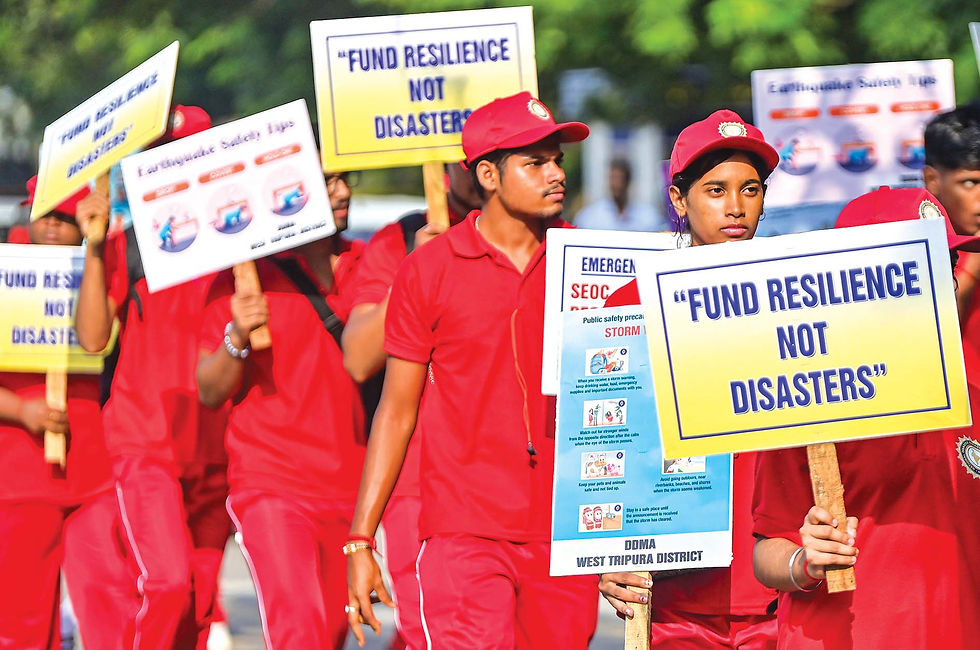As India’s 1.4 billion consumers trade thrift for aspiration, private consumption now drives nearly 60 percent of the GDP, fuelling a transformation that investors can scarcely afford to ignore. Think about your own life over the past five years. You would have probably ordered food from Swiggy, bought something on Amazon or Flipkart, upgraded your phone, or subscribed to Netflix or Spotify. Your parents might have bought an air-conditioner or even a new car. Someone in your family has likely swapped the local kirana shop for a mall or a quick-commerce delivery app. None of this is accidental. It is the power of consumption that is quietly redefining India’s economy. The word ‘consumption’ may sound academic or technical, but it is simple. It is everything we buy - from morning chai to an OTT subscription, from vegetables to smartphones, from medicines to clothes. Every rupee you spend is consumption, and in India, we are spending more than ever before. Private final consumption expenditure has become the principal engine of growth, cushioning the economy against global shocks and export slowdowns. In an era when manufacturing and exports face headwinds, domestic demand has emerged as India’s most reliable growth driver. In short, India’s economy is not just about factories or exports. It thrives on what 1.4 billion people choose to buy every day. Here is the kicker: private consumption now makes up nearly 60 percent of India's entire GDP. Changing demographics India sits at a demographic inflection point. A huge chunk of our population is young, working, and earning decent salaries. Unlike countries like Japan or Italy where populations are aging and shrinking, India’s workforce is young, expanding and ambitious. More people working means more money coming in, which mean more spending. But it is not just about numbers. It is about what people are spending on. A generation ago, most families spent their income on basics - food, rent, and school fees. Today, after meeting essentials, they still have something left. That extra money is transforming the way India lives. We are buying cars, air tickets, branded clothes, health insurance, gym memberships, expensive coffee and taking foreign vacations. This shift from ‘need’ to ‘want’ is what economists get excited about - a sign of a society that is not just surviving but thriving. Between 2020 and 2024, consumer spending jumped by more than 30 percent. By 2030, the number of Indians able to afford discretionary purchases will have risen by half. Per-capita income, now around $2,800, is projected to approach $4,000 within a few years. In real terms, that would push tens of millions into the ‘consuming class,’ that is households earning enough to influence not just local markets but global corporate strategies. India is poised to become the world’s third-largest consumer market by the end of the decade, trailing only China and the United States. Automobiles are flying off the lots, especially in smaller cities. Two-wheelers and electric vehicles are joining the mainstream. Fast-moving consumer goods form the steady heartbeat of the economy. E-commerce has become second nature, driven by digital payments and doorstep delivery. Financial products are spreading: more Indians hold credit cards, mutual funds and insurance. Healthcare, diagnostics and wellness apps are thriving. Restaurants, OTT platforms and tourism are booming as Indians increasingly value experiences as much as possessions. The beauty of this boom is its breadth. From a packet of Parle-G to a BMW, both feed the same consumption engine at different ends of the spectrum. And unlike earlier cycles, the surge is not confined to big cities. Tier-2 and Tier-3 towns from Surat to Siliguri now power demand for everything from smartphones to SUVs, creating a geographically diverse and durable growth base. Investor’s opportunity For investors, the implications are clear. Firms catering to domestic consumers - from soap-makers to smartphone vendors - enjoy a vast and resilient market. Over the past two decades, consumption-linked companies have consistently outperformed others, because people keep buying even in downturns. One way to tap into this momentum is through thematic mutual funds that focus on consumption. Such funds spread investments across sectors, reflecting the diversity of consumer demand. For newcomers, they offer an easier, less risky way to benefit from the theme without having to pick individual stocks. Yet patience is crucial. Consumption booms unfold gradually, occasionally tempered by inflation or shifting tastes. Over the long term, however, the trajectory remains upward. Investing in India’s consumption is, in effect, investing in its people—millions of households aspiring to a better life. It is also an implicit bet on stability: on incomes rising, cities expanding, and policy remaining supportive of domestic enterprise. This theme suits young investors seeking long-term growth, planners saving for retirement or education, and those looking to diversify through exposure to multiple industries. It rewards discipline and a long-term mindset rather than speculation. Consumption is not merely an economic statistic but the pulse of a changing nation. Every time someone buys a first smartphone, books a flight, or steps into a mall instead of a roadside stall, they participate in India’s transformation. For investors and policymakers alike, one truth stands out: India is not just producing or exporting more but spending more. And where its people spend, growth inevitably follows. (The writer is a Bengaluru-based freelancer. Views personal.)










Comments